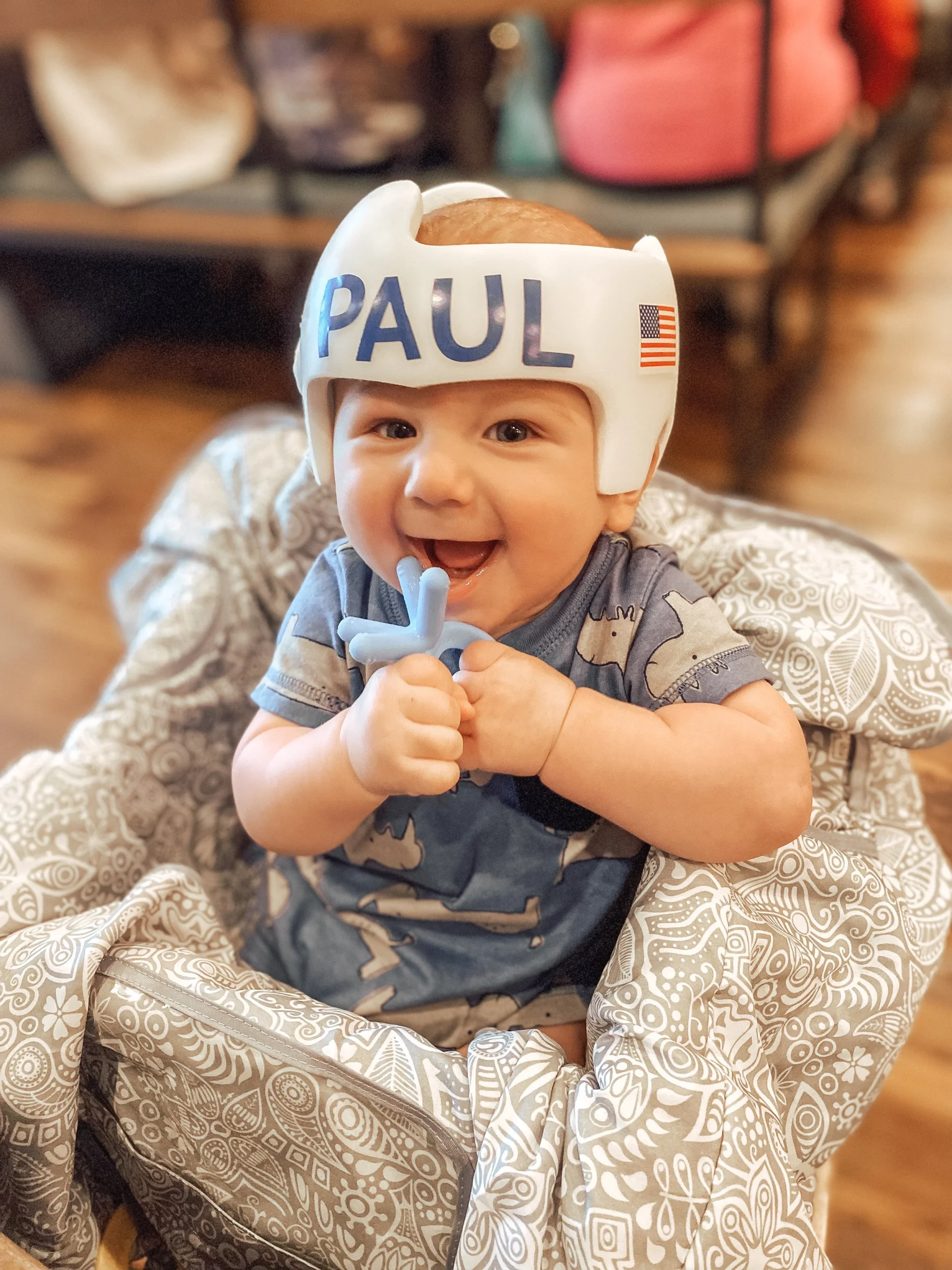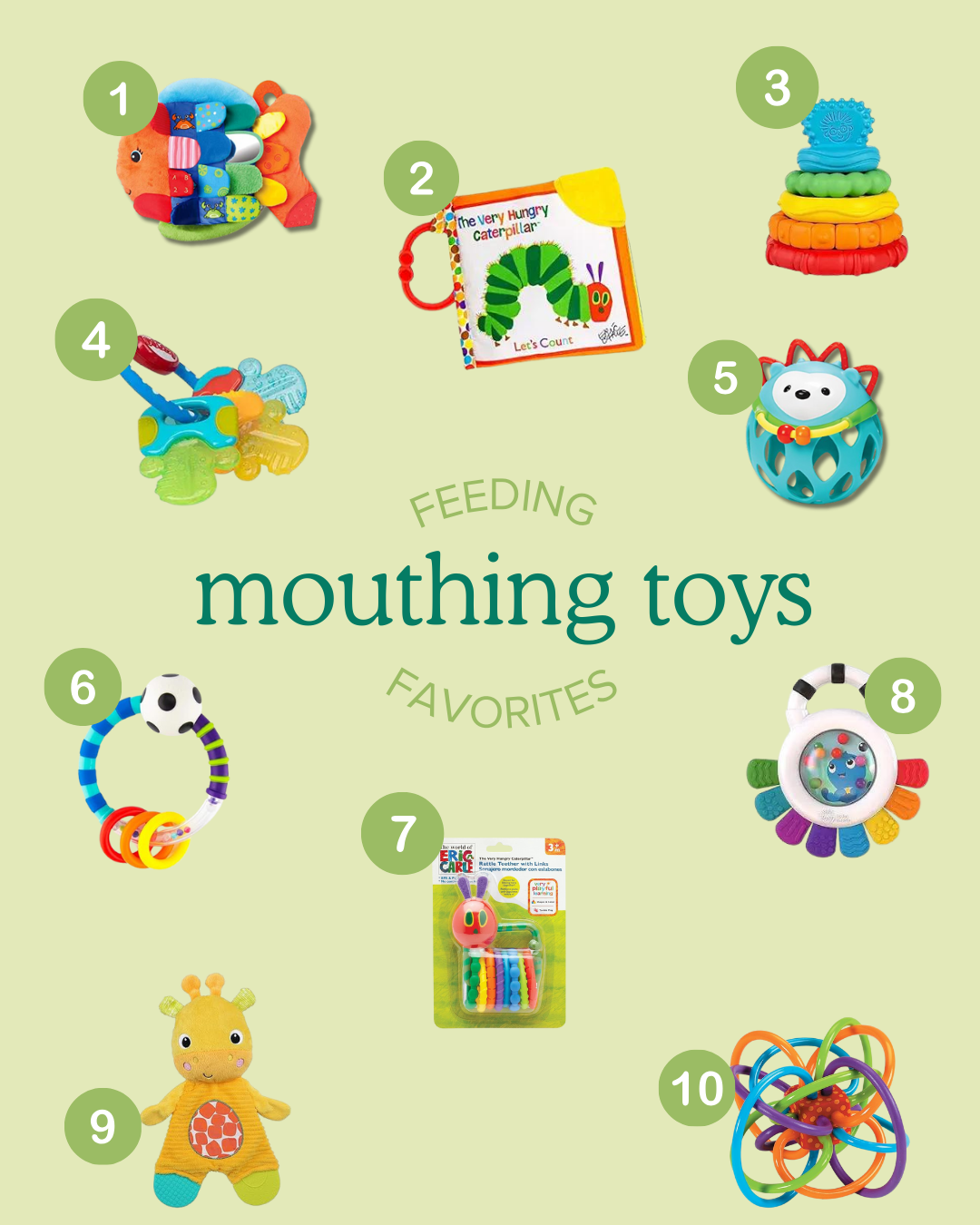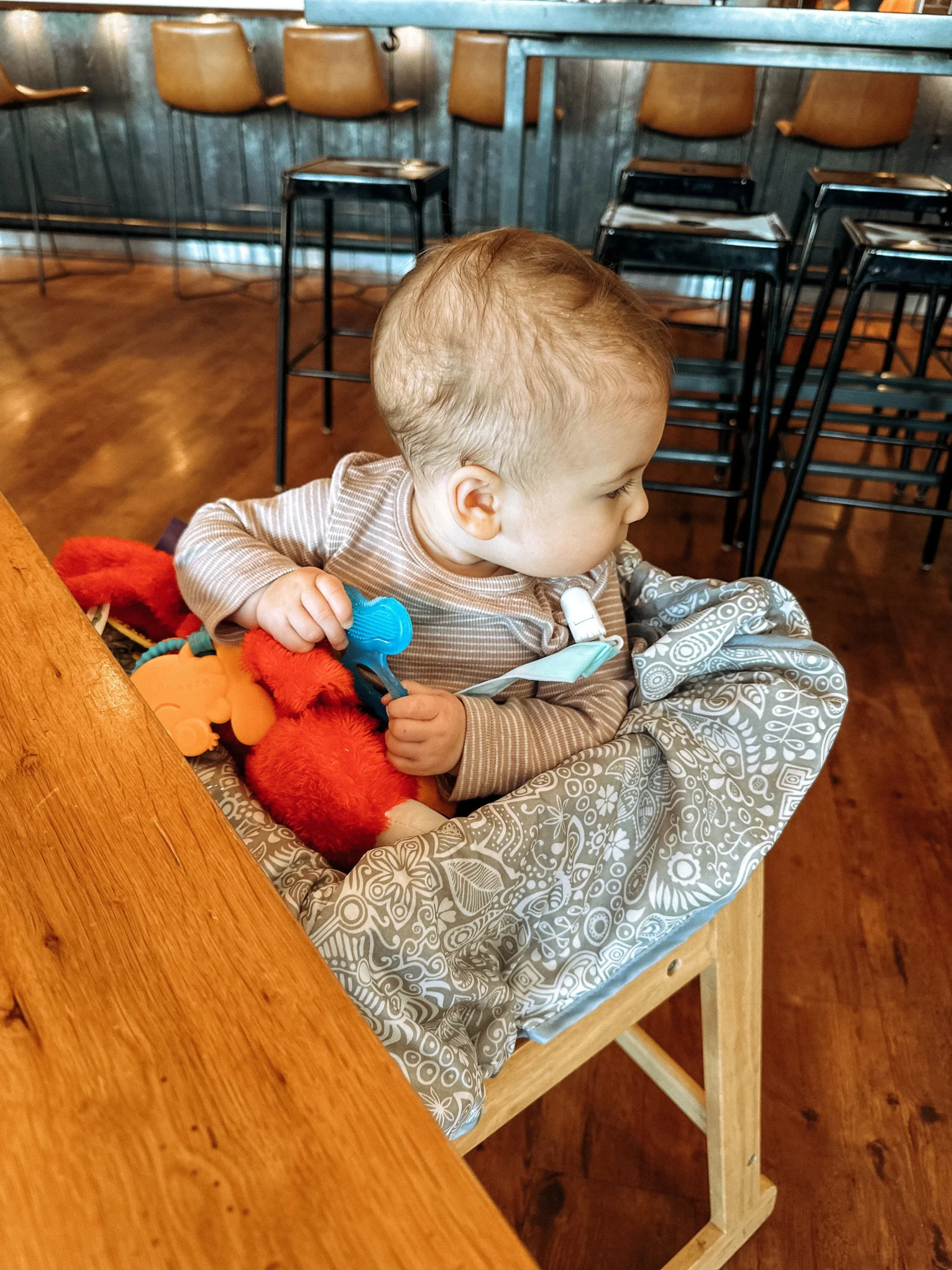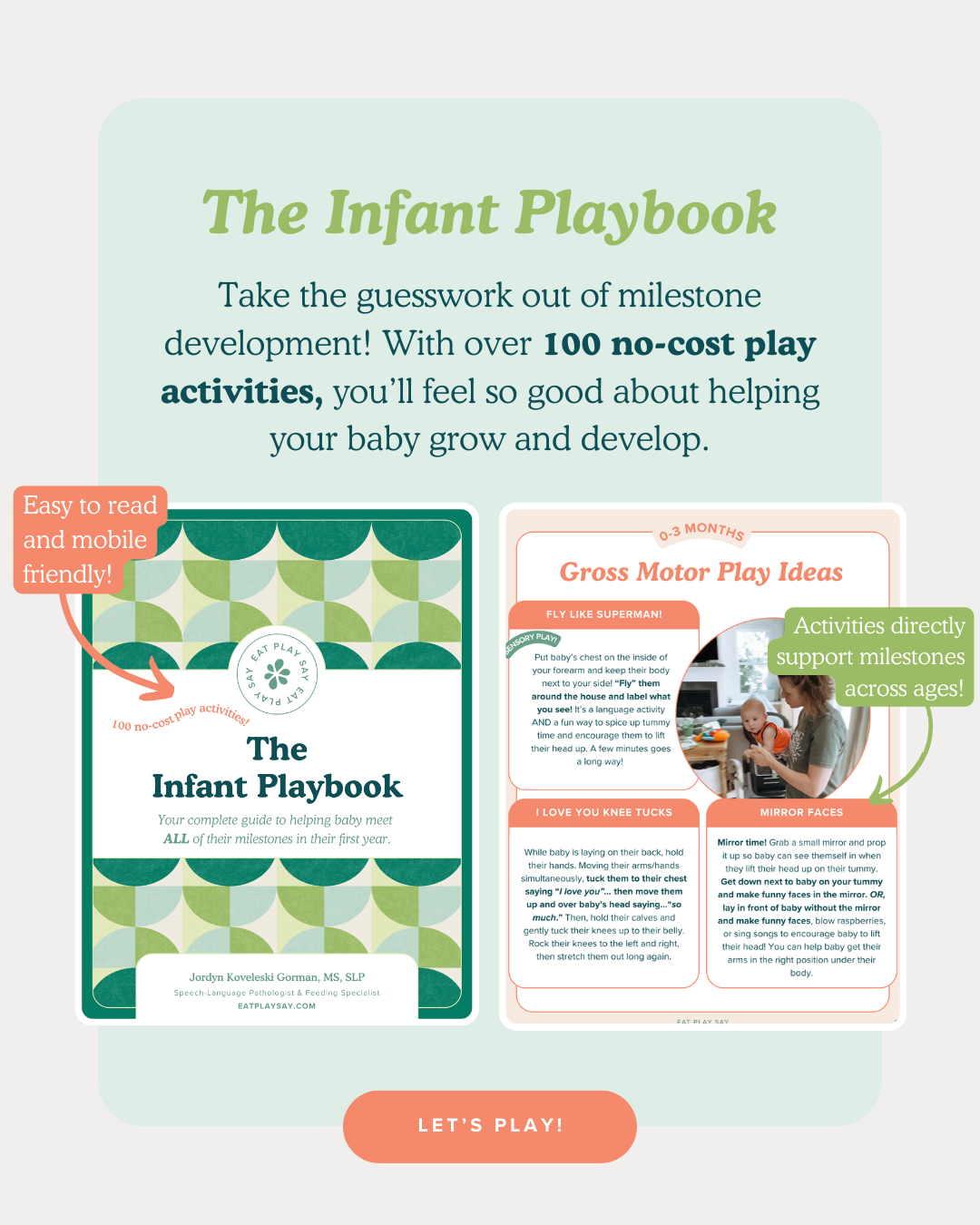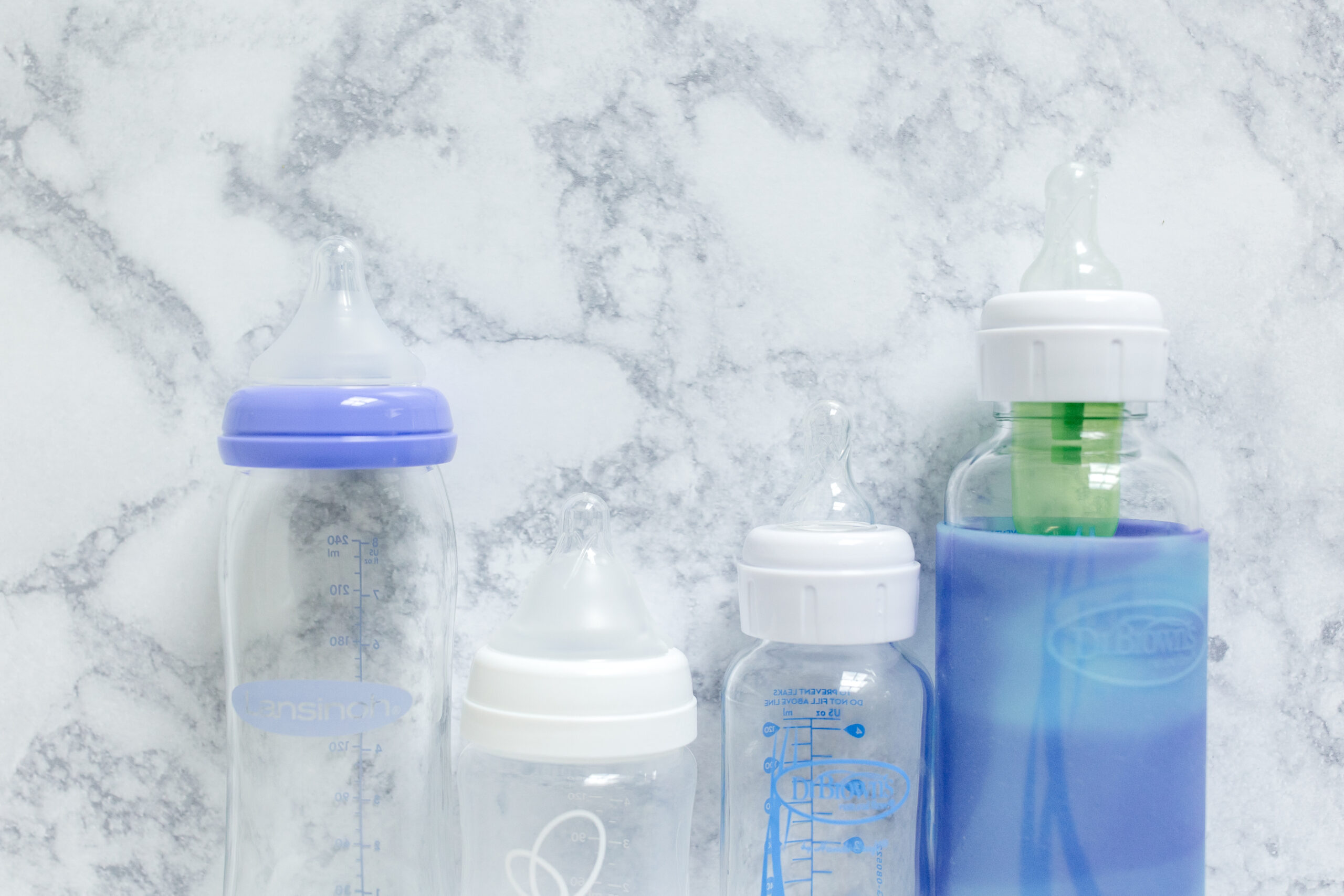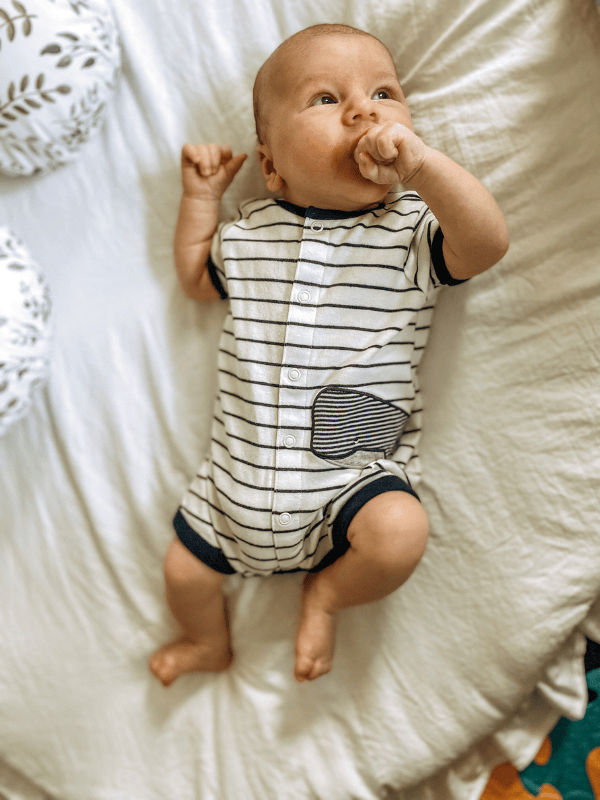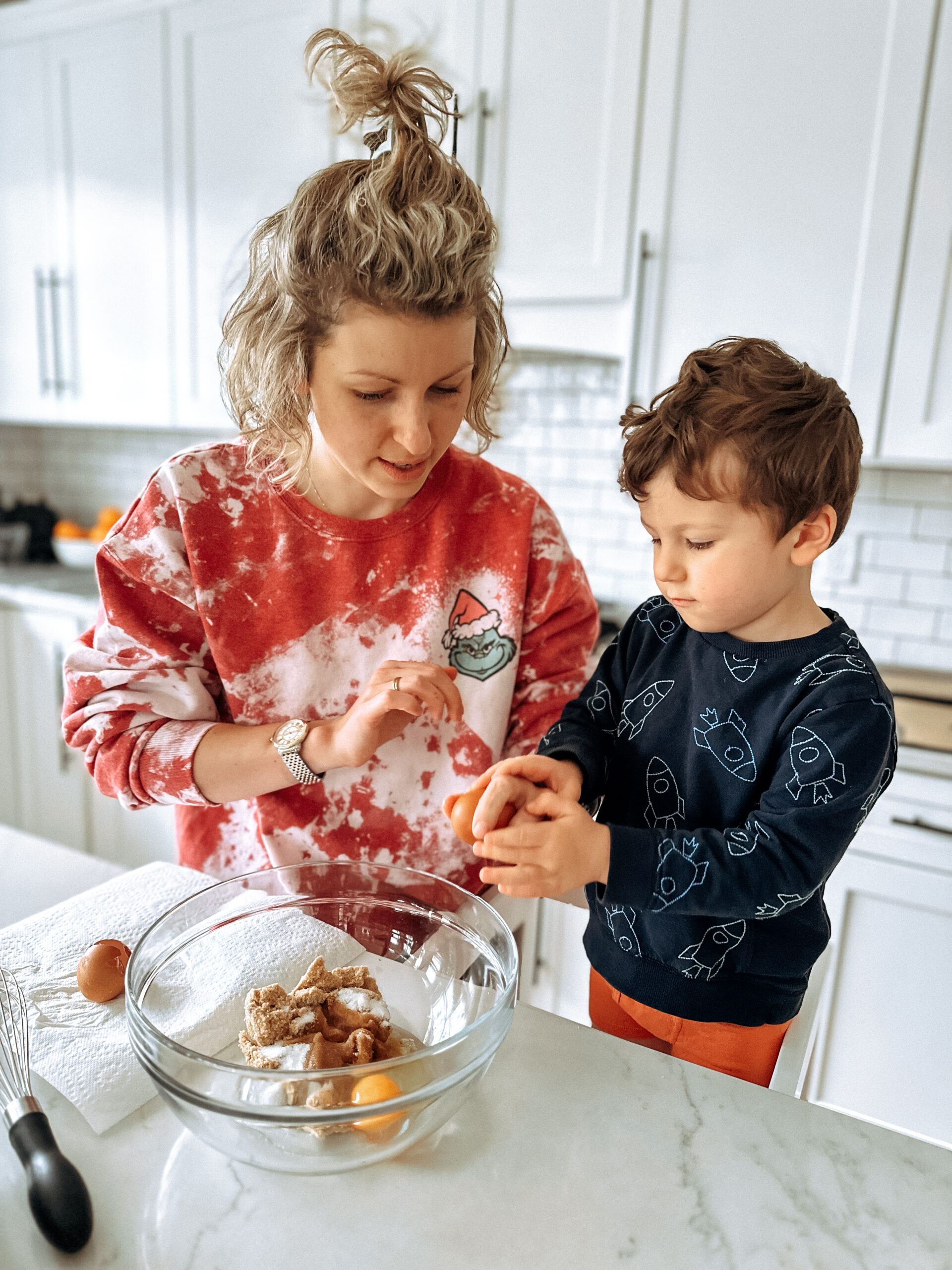Let them! Yes, you read that right, we want to encourage baby to be putting (safe) objects in their mouth. From the minute a baby is born, they begin exploring the world through their sensory system. One of the most important forms of babies’ sensory exploration is by mouthing objects.
What is “mouthing”?
It has been said that babies “first begin to know and learn about the world through their mouths. The mouth is not only a nutritional gate to the world but also can be a source of comfort.” (1)
Babies first begin by mouthing their own hands (typically as a hunger cue) which helps them quickly learn that the hands and the mouth can work together to help satisfy one of our most basic needs: hunger. Babies begin to transition from bringing their hands to mouth as a hunger cue to more exploratory purposes around 3-4 months.
It is also around this time where you will start to see them show interest in bringing toys and teethers to their mouths. This hand-to-mouth coordination is important for helping babies develop and learn how to bring food and utensils to their mouths when they later start solids.
Mouthing helps babies prepare for starting solids
Having an organized sensory system is what helps babies prepare for starting solids.
Through putting objects in their mouths, baby begins to explore various textures, sizes, and shapes which will help develop and organize their oral sensory systems. Think of all the textures and mouth feels you experience when you eat food. Your sensory system has to learn and organize that information safely before you are ready to eat, chew, and swallow food.
Mouthing toys and objects is the first step and safest way to begin ready-ing our mouths for eating. That’s right! From the minute you give your baby their first teether (this one is my favorite!), you are already preparing them for their first bite of real food (even though that’s still a few months away).
We also know that littles who brought teethers and toys to their mouth for exploration are more likely to self-feed when in the high chair.
So, just another reason to encourage that oral exploration early on.
Mouthing helps strengthen baby’s mouth muscles
The sensory system is not the only thing that needs practice and getting ready for eating, but the mouth muscles and tongue also need their fair share of safe exploration before they are trusted to handle any real food.
Mouthing and chewing on chew toys, objects, and teethers also helps your baby strengthen and coordinate their jaw muscles for chewing practice, as well as get that tongue moving around to prepare for handling the food inside of our mouths. Who knew your little one was practicing so much by just simply mouthing objects!
Mouthing helps regulate baby’s sensory system
Along with eating preparation, mouthing objects and teethers can also help to regulate baby’s sensory system. Having a “regulated sensory system” means that our brains are taking in all of the information our body is receiving through the nervous system (the senses) and using that information to help us feel more alert or calm based on the situation we are in.
One of the first ways babies learn to regulate their sensory system is through their mouths by sucking.
Makes sense, right? Sucking not only allows a baby to fill a hunger cue (sucking milk from a bottle or nipple), but also causes them to feel calm. Think about how sucking (either on a bottle, nipple, pacifier, or finger) typically helps a very young baby to calm down when they are upset. That is a baby “regulating” their sensory system.
As babies continue to grow and develop, they continue to seek sensory regulation through their mouth. That will naturally transition from sucking on a pacifier, to mouthing and chewing on toys and teethers. This transition usually happens around 3-4 months when baby is exploring their hands and beginning to grasp objects to bring them to their mouth.
What toys are safe to go in my baby’s mouth?
Now, of course, we want to be sure that your baby is putting safe, clean, and appropriate things in their mouths because concerns about germs are valid!
Make sure the teether is bigger than your baby’s hand and only PART of the teether should fit inside of baby’s mouth.
We should never give our baby anything where they can fit the entire object inside of their mouth. Utilizing appropriate teethers (and toys with teethers on them) is a great way to help your baby in safe oral exploration.
Around 8-10 weeks of age, introduce baby to teethers! Start with the teethers at the top of the graphic and work your way towards the bottom as baby starts solids! See the full list here!
Toys Safe for Mouthing
These are great toys to offer to your little one around 3 months and older, as their grasping skills refine. A toy and teether all in one!
When is “mouthing” no longer appropriate?
This may shock you, but little ones can continue to put objects in their mouth well into toddlerhood. Typically, after baby turns 1 year of age there starts to be a drop in mouthing frequency, as baby knows how to play more appropriately with toys and continues to explore them with their hands and body. As teeth continue to come in, your little one may look to put toys and teethers in their mouth, but overall mouthing occurrences should be minimal as your toddler approaches 2-3 years of age.
Cleaning Toys and Teethers
I’m sure your brain is saying, “This all sounds great, but I can tell you where that teether is going to end up… the floor!” Being a mom, I understand that we are all trying our hardest to protect our babies from germs and with a developing grasp, you are exactly right– that teether will end up on the floor plenty of times.
Luckily, there are some baby safe cleaning products to help keep your baby’s teethers and toys as clean and germ free as possible, and actually my personal favorite is using diluted vinegar and water! Spot clean or submerge to clean and then rinse.
My favorite mom hack, attach that teether to a pacifier clip!
If it’s attached to your baby, it’s less likely to hit the floor. These fabric pacifier/teether clips are my fave!
What if my baby isn’t interested in teethers?
If your baby is about 3 months old not showing interest in teethers or not starting to mouth objects yet, that’s okay! They just might not be ready.
Here are some things you can try to engage their interest in teethers:
-
Hang toys from “A” frame stander/a car seat to increase interest and to help make it easier for baby to get the toy/teether to their mouth.
-
Hold teethers to their mouth to help them explore as their hands get better at grasping! Sometimes baby’s grip strength or hand to mouth coordination needs a bit more time to develop and that’s perfectly fine!
-
Whenever you can, give them an opportunity to grasp and try to hold, and in time they will get there!
Help your baby meet milestones through play!
